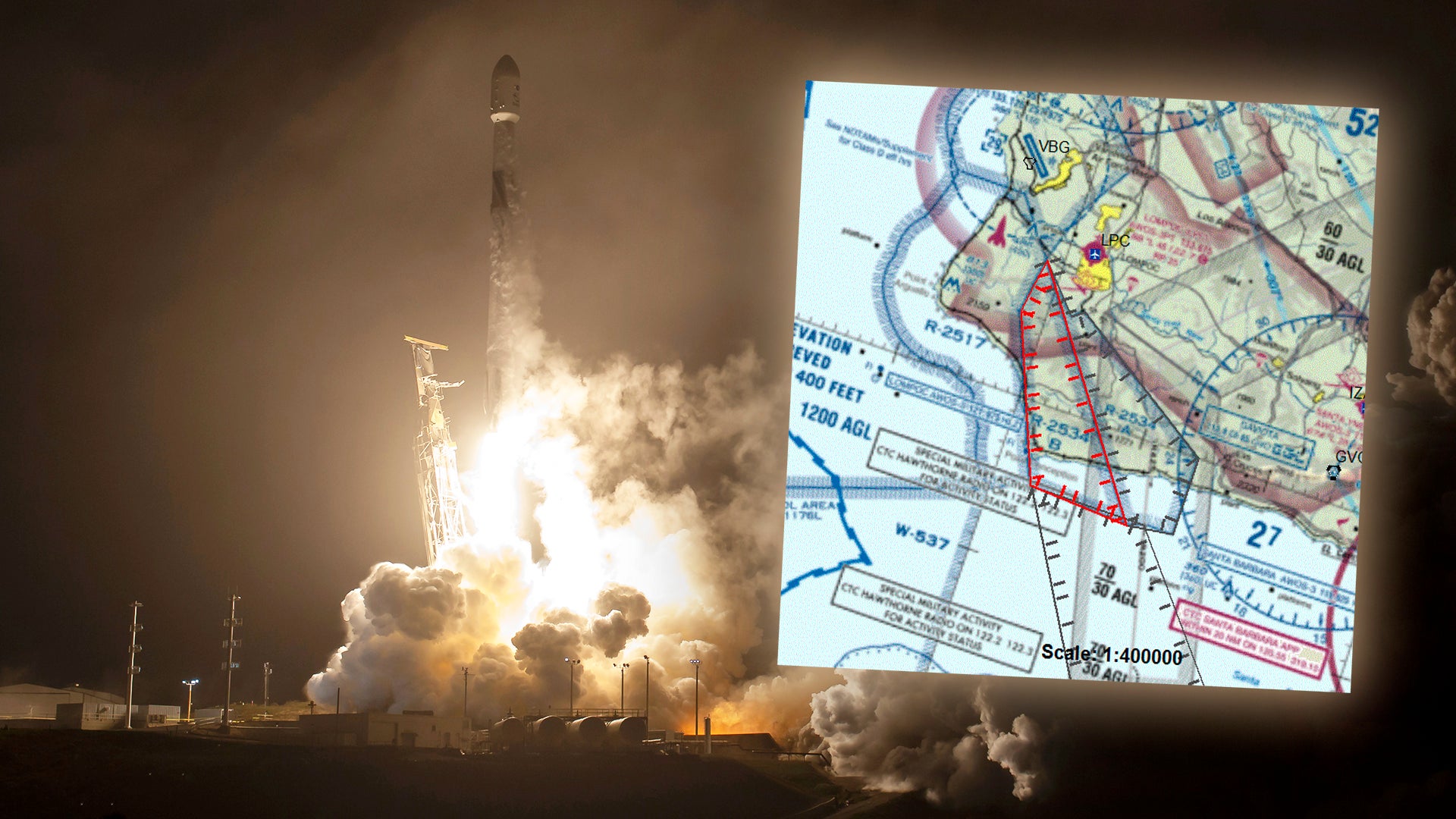SpaceX plans to launch a package of Starlink satellites from Vandenberg Space Force Base in California on Saturday. The Falcon 9 rocket is scheduled to launch to low-Earth orbit from Space Launch Complex 4 East (SLC-4E) at 1:24 AM Pacific Standard Time, though launch schedules often change. The launch might be considered unremarkable — SpaceX has launched more than 1,800 Starlink satellites so far, according to Space.com — but for the fact that its scheduled flight plan will have the rocket travel shortly over land then and along the California Coast before making a small dogleg turn to the east, an unusual maneuver. This is reportedly the first time a SpaceX launch from Vandenberg will follow such a path, and it is bound to give Southern Californians an unprecedented light show.
Temporary flight restrictions put in place show a reserved slice of airspace that runs southeast from Vandenberg roughly parallel to California’s Highway 1. This would appear to take the rocket out over the Southern California Bight and the Channel Islands.
The website Teslarati — which describes itself as “a California-based multi-platform media company and leading lifestyle brand with a focus on Tesla, SpaceX, and ventures affiliated with Elon Musk” — explains that the launch will place the satellites in orbit at an inclination of 53.22 degrees. NASA defines orbital inclination as a measure of the angle formed between the equator and the plane of the object’s orbit when viewed from the side, so that the plane appears as a line.
Teslarati reports that previous launches from Vandeberg have not been able “to regularly launch to inclinations lower than approximately 56 degrees.” A smaller inclination keeps an orbit closer to the equator and, therefore, potentially in view of desired ground stations longer. In this case, the website notes that SpaceX gave Celestrak information that suggests the Falcon 9 rocket will make a slight left turn after launch — just a few degrees — to achieve an orbit with the shallower inclination. Shallower is a relative term, of course, as 53 degrees is almost, but not quite, a polar orbit — which is defined as an orbital inclination from 60 to 90 degrees, according to the European Space Agency.
Starlink is a SpaceX-operated constellation of satellites connected by a mesh-like network of data links that provides internet connections to remote areas and other services. SpaceX launched another Falcon 9 from Vandenberg last month, and the San Luis Obispo Tribune reports that launches from the base usually provide the Central Coast with “a spectacle.” Space launches typically avoid populated areas as much as possible for as long as possible while in the atmosphere, often heading straight out over deep water. This launch’s unusual flight path may make the show more spectacular than most. Current weather forecasts for Vandeberg during the launch time are for clear skies and temperatures in the upper 30s — great skywatching weather. SpaceX reports it could also launch on Sunday, December 19, at 1:03 AM Pacific Standard Time (PST) if the first launch is postponed.

SpaceX rockets are designed to be reusable, and the company says the Falcon 9 first-stage booster being used for this weekend’s shot “previously launched Dragon’s first crew demonstration mission, the RADARSAT Constellation Mission, SXM-7, and seven Starlink missions.”
If all goes according to plan, this booster will land on a SpaceX drone barge — dubbed “Of Course I Still Love You” — in the Pacific Ocean. The company will stream a live webcast of this mission that will begin about 15 minutes prior to liftoff.

Contact the author: Brian@thedrive.com.
